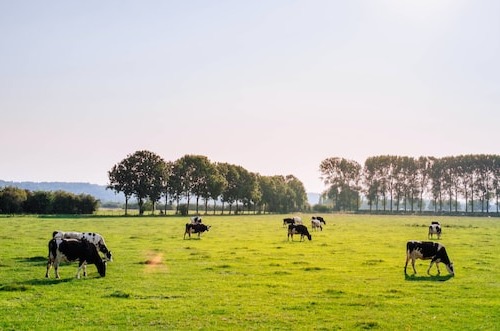W20: Dairy Update

In W20 in the dairy landscape, French manufacturers remain in an uncomfortable position, between complicated negotiations with the downstream dairy sector, which is demanding lower prices whilst supplies remain scarce in the countryside. Prices are stabilizing in Holsteins, Normandes, and Montbéliardes but experts expect French manufacturers to maintain pressure on dairy prices, despite the low supply. In the UK, a recent survey of top milk buyers estimates that there were 7.5K British dairy farmers in April 2023, down 4.8% YoY and 4.5% compared to the October 2022 survey. This is attributed to farm input costs remaining historically high despite the latest Agricultural Price Index indicating that input cost inflation has eased. Combined with falling milk prices, this has reduced profit margins for many dairy farmers. Also, the current high level of cull cow prices, as well as uncertainties about changes in agricultural subsidy schemes, have led some dairy producers to change their future direction. Despite the drop in the number of dairy producers in the last 12 months, the good weather conditions in the last autumn and the traces of higher prices at the end of 2022 meant that the average milk production per farm is expected to grow. On the other hand, the Ulster Farmer’s Union (UFU) warns that further cuts to UK milk prices are expected to occur. This situation is anticipated to lead to an extremely difficult time for UK dairy farmers due to the high cost of living and food inflation.
The USDA indicates that April US milk production amounted to 19.2B pounds, up 0.3% YoY and 0.1% higher than March's estimate of 19B pounds. The 24 major US milk-producing states in April 2023 registered a growth of 0.5% in milk production, accounting for 18.4B pounds. The improvement in milk production is linked to the growth in US production per cow, which grew by 1 pound YoY to 2,037 pounds. The US herd size is also growing, as the number of milk cows on farms in April 2023 was 9.43M heads, 26K more cows than in April 2022. US milk production rose in Idaho, Iowa, Indiana, Kansas, Michigan, Minnesota, Ohio, South Dakota, Texas, and Wisconsin, offsetting the decreases in Arizona, California, Florida, Illinois, and New Mexico. Lastly, Kazakhstan authorities report that domestic consumption of dairy products amounts to 2.3MMT per year, with domestic dairy production only able to cover 81.6% of the country's needs. The remaining demand is filled with imported dairy products. 172 milk processing enterprises process 1.8MMT of milk per year, which is 46% of its total production. Although the capacities of Kazakh enterprises allow processing of about 2.5MMT per year, they are only 77% loaded. The head of the Dairy Union of Kazakhstan, Vladimir Kozhevnikova, explains that the country’s dairy commodity resources are seriously lagging behind processing capabilities due to the lack of marketable milk, as 50% of the milk supplied for processing does not meet the requirements of the CU regulations. Also, milk producers in Kazakhstan buy natural milk at a high price, which they then struggle to sell due to the dominance of imports.



